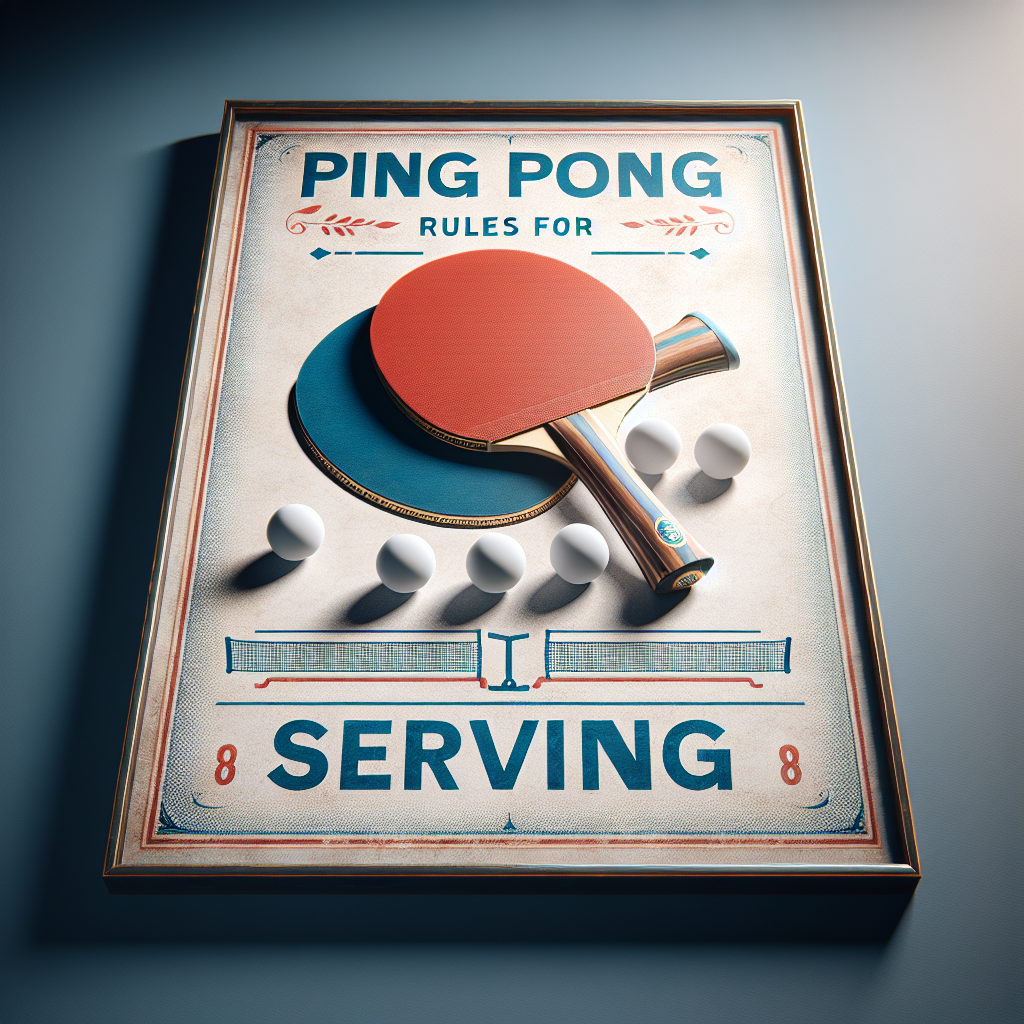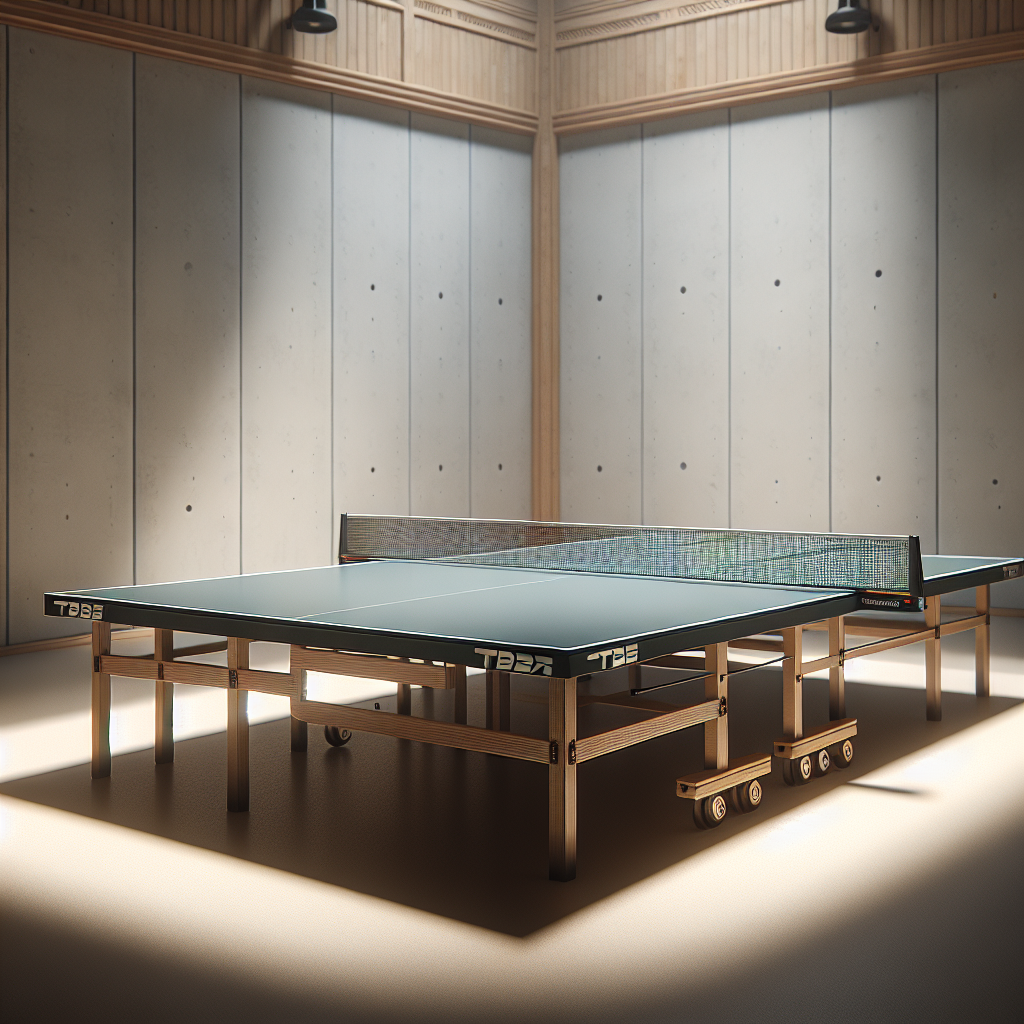The Serve in Ping Pong
In ping pong, the serve is your golden ticket to control the game. It’s the only stroke where you have full command over the ball. Nail this, and you’re halfway to victory. Let’s break down why the serve is so crucial and the rules you need to follow.
Why the Serve Matters
The serve isn’t just one of the six core strokes in table tennis; it’s the kingpin. Experts on Quora say it’s vital because it lets you set the pace, spin, and placement of the ball. You’re in the driver’s seat, making it a prime chance to steer the game your way.
A killer serve can throw your opponent off balance, making them scramble for a return or mess up entirely. Plus, a strong serve sets you up for the next shot, giving you the upper hand right from the get-go.
Serving Rules You Gotta Know
To keep things fair and square, there are some must-follow rules for serving in ping pong. Here’s the lowdown:
-
Toss It Up: Start by tossing the ball with an open palm. It has to go straight up, at least 6 inches (15 cm) high.
-
Hit It Right: Smack the ball as it comes down, before it hits the table. Make sure you’re behind your end line and above the table when you hit it.
-
Keep It Visible: Your opponent needs to see the ball the whole time. No hiding it with your body or hand.
-
No Crazy Spin: Don’t go overboard with the spin. The ball should have a clear upward path when you hit it.
-
Switch It Up: In singles, you serve two points in a row, then it’s your opponent’s turn. In doubles, your team alternates serves every two points.
For the full scoop on all the rules, check out the official ping pong rules or official table tennis rules.
Mastering the Serve
Getting good at serving takes practice and a bit of finesse. It’s all about the “kinetic chain,” a fancy way of saying you use your whole body—from your feet to your wrist (Quora). Focus on your form, where you place the ball, and how you spin it. Do this, and you’ll see your serve—and your game—improve big time.
Remember, the serve isn’t just the start of the game; it’s your chance to take control. With some practice and a solid grasp of the rules, you can develop a serve that’s both powerful and precise, giving you a leg up in any match.
Serving in Singles vs. Doubles
Serving in ping pong isn’t just about getting the ball over the net; it’s about strategy, precision, and sometimes a little bit of trickery. Let’s break down the key differences and some killer strategies to up your game.
Serving Rules: Singles vs. Doubles
In singles, you’re the boss of the table. Your serve can land anywhere, giving you the freedom to aim for those tricky spots that leave your opponent scrambling. But in doubles, things get a bit more regimented. Your serve has to go diagonally from the right court to the right court, making accuracy crucial. Plus, after two serves, you and your partner switch places. It’s like a dance, but with more sweat and fewer sequins.
Serving Strategies That Work
Mastering your serve can be a game-changer. Here are some strategies to keep in your back pocket:
-
Spin and Placement: Spin is your secret weapon. Whether it’s topspin, backspin, or sidespin, adding spin makes your serve harder to return. Aim for the corners or the middle to keep your opponent guessing and off-balance (Quora).
-
Mix It Up: Variety is the spice of ping pong. Change up the speed, spin, and placement of your serves. Throw in a short serve, then a long one, maybe a fast one next. Keep your opponent on their toes and disrupt their rhythm.
-
Watch and Learn: Pay attention to your opponent’s reactions. If they struggle with a certain type of serve, use it to your advantage. Notice their weaknesses and exploit them. If they hate backspin, give them more backspin.
Practice Makes Perfect
The best way to get good at serving? Practice. Try different spins, placements, and speeds to see what works best for you. The more you practice, the better you’ll get at controlling the game from the very first serve.
For more tips and tricks, check out our official ping pong rules and our guide on how to play ping pong. Happy serving!
Ping Pong Table Regulations
Playing ping pong is a blast, but having the right table makes all the difference. Let’s break down the essentials you need to know about table dimensions and specs, plus what it means to have an ITTF-approved table.
Table Dimensions and Specs
First off, if you’re just playing for fun, a space of 20 feet by 14 feet is perfect. But if you’re aiming for official tournaments, the International Table Tennis Federation (ITTF) has some strict rules.
For official games, the playing area should be at least 14 meters long and 7 meters wide, with 5 meters of clearance above. This gives players enough room to move and make those killer shots. The table itself has to stick to ITTF regulations to be legit for official play.
The net height is another biggie. According to ITTF, the net should be 15.25 cm (about 6 inches) high. The net posts also need to be 6 inches high and extend 6 inches off the sides of the table. The base of the net should be as close to the table surface as possible to keep things fair.
ITTF-Approved Tables
In the pro ping pong scene, ITTF-approved tables are the gold standard. These tables go through rigorous testing to meet ITTF’s specific requirements, making them suitable for international competitions.
One key rule is the table’s color. Most tournament tables are dark blue, but the ITTF just says the surface needs to be “dark colored” with a matt finish. This helps players see the ball better against the table.
ITTF-approved tables are usually 22mm to 25mm thick, which gives the ball a consistent bounce. They also have a sturdy structure underneath to keep the surface even and stable. These tables are built to the highest standards, offering an optimal playing experience for pros.
But don’t worry, not every table needs to be ITTF-approved. For casual play at home or in the office, as long as the table meets basic dimensions and specs, you’re good to go. ITTF approval is mainly for tables used in international competitions and professional tournaments.
Knowing the right table dimensions and specs ensures a fair and fun game, whether you’re playing for fun or aiming for the big leagues. Having the right table means you can play by the official ping pong rules and enjoy a level playing field for everyone.
Game Rules and Scoring
To really get the hang of ping pong and play like a pro, you gotta know how the points work and what happens during those nail-biting moments like deuce and serving rotation.
Points System in Ping Pong
Ping pong games usually go up to 11 points, and you need to win by at least two points (PongFit). So, if you’re the first to hit 11 points with a two-point lead, you win. Fun fact: the ITTF (International Table Tennis Federation) changed the rule from 21 points to 11 points back in 2001 (Killerspin).
Each player serves two points in a row. But when the score hits 10-10, the serve switches after every point instead of every two. And if you miss the ball while serving, your opponent gets a point (Killerspin).
Deuce Situations and Serving Rotation
When the score ties at 10-10, it’s called a deuce. In this case, each player serves just one point at a time, and the serve alternates after each point. The first player to get a two-point lead after the tie wins the game.
For example, if the score is 10-10, the player who served first in that game serves one point, then the opponent serves the next point. This back-and-forth continues until someone gets a two-point lead and wins.
Serving rotation is a big deal in ping pong. Each player gets two serves in a row, and the serve alternates until someone reaches 11 points or a deuce happens at 10-10. In a deuce, each player serves one point, and the serve alternates until there’s a two-point lead.
By getting the hang of the points system and the rules for deuce and serving rotation, you’ll be ready to take on any ping pong challenge with confidence. For more details on official ping pong rules and table tennis rules and regulations, check out the guidelines from the governing bodies.








